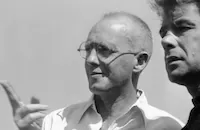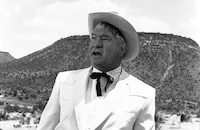Sorority House

Brief Synopsis
Cast & Crew
John Farrow
Anne Shirley
James Ellison
Barbara Read
Adele Pearce
J. M. Kerrigan
Film Details
Technical Specs

Synopsis
Alice Fisher, the daughter of a small town grocer, goes to college on the money that her father has borrowed on his store. She arrives in time for "rush week," during which every girl hopes that some sorority will make the coveted nod in her direction. At Mrs. Dawson's rooming house, Alice meets her roommates, Dotty Spencer and Merle Scott. Dotty, a sophomore, has a healthy contempt for sororities, but Merle's self-esteem depends upon being asked to join one. On campus, Alice meets handsome football hero Bill Loomis, who falls in love with her and determines to make her well-respected. After Bill tricks all the sororities into believing that Alice's father is a wealthy chain store mogul, Alice suddenly is swamped by attention from all the houses and finds herself invited to a round of parties. Meanwhile, Alice has written to her father that she needs more money in order to live up to her newfound popularity, and he decides to sell his store and move to the distant college town to be near his daughter. Disillusionment with her new life sets in when Alice mingles at a party during parents' night and realizes that she cannot compete with the wealthy and prominent people there. The final blow comes when she realizes that the sorority crowd only favored her because they thought she was rich. The arrival of her father and her subsequent shame at his presence in the company of her snooty acquaintances open Alice's eyes and cause her to foreswear the exclusive sorority cliques. When the bids arrive, Merle is devastated that she has not been asked to join, prompting Mr. Fisher to lecture her about the importance of being true to oneself. Alice rejects her own bid to the Gama house, feeling quite content to remain in the company of her father, her friends and boyfriend.

Director

John Farrow
Cast

Anne Shirley

James Ellison
Barbara Read
Adele Pearce

J. M. Kerrigan

Helen Wood
Doris Jordan
June Storey

Elizabeth Risdon
Margaret Armstrong
Selmer Jackson

Chill Wills
Crew
Gladys Atwater
Carroll Clark
Millard Kaufman
Lee Marcus
Harry Marker
Nick Musuraca
Argyle Nelson
Van Nest Polglase
Robert Sisk
Edward Stevenson
Roy Webb
Aleen Wetstein
Earl A. Wolcott

Film Details
Technical Specs

Articles
Sorority House
The plot of Sorority House differs from the earlier films because it focuses on the negative aspects of sorority life. Poor girls being looked down upon and rejected by wealthy sorority girls and the tragic consequences are as relevant today as they were in 1939.
Sorority House was not an important film for most of its participants; it was just another "B" picture for RKO, but it does contain an early appearance by Marge Champion and it was also Veronica Lake's first film. Both play unnamed co-eds. Former Powers model Doris Davenport (who would be more famous as Gary Cooper's co-star in The Westerner the following year) plays snooty sorority girl Neva Simpson.
The New York Times review of Sorority House from May 18, 1939, took little notice of the film, "Thankful as we ever are for small favors, we must acknowledge our indebtedness to the Palace's Sorority House for a new word, dreep. It would be listed in the dictionary thus: "Dreep, n., colloq. A combination of dreary and weep; used to designate female students at Talbot University who have not been elected to membership in any of the sororities." Anne Shirley, fearful of becoming a dreep, (the fate worse than death), was mortified when her father, a humble grocer, called at the Gamma house on pledge night; but she recovered in time, proudly tore up the sorority bid and decided the Gammas were snobs anyway. Hoisting RKO by its own petard, Sorority House is a dreep."
Producer: Robert Sisk
Director: John Farrow
Screenplay: Mary Coyle Chase, Dalton Trumbo
Cinematography: Nicholas Musuraca
Film Editing: Harry Marker
Music: Roy Webb
Cast: Anne Shirley (Alice Fisher), James Ellison (Bill Loomis), Barbara Read (Dorothy Spencer), Pamela Blake (Merle Scott), J.M. Kerrigan (Lew Fisher), Helen Wood (Mme. President Martha Lanigan).
BW-64m.
by Lorraine LoBianco
Sources:
www.allmovieguide.com
The New York Times: The Screen by Frank S. Nugent, May 18, 1939
The Internet Movie Database

Sorority House
Quotes
Trivia
Notes
The working title of this film was Chi House. A modern source notes that Veronica Lake appeared in this film using the name Constance Keane.














